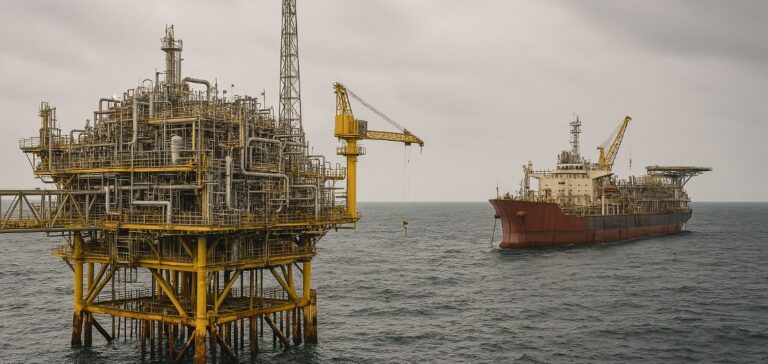China National Offshore Oil Corporation Limited (CNOOC Limited) has officially commenced production at the Wenchang 9-7 oilfield development project, located in the western part of the Pearl River Mouth Basin. This offshore field lies at a depth of approximately 120 metres. It relies on a newly built drilling and production platform, which is integrated with existing regional infrastructure to streamline operations and accelerate deployment.
Technological deployment and production targets
The project includes the commissioning of 25 wells, comprising 18 production wells and 7 gas injection wells. The production target is estimated at 12,000 barrels of oil equivalent per day by 2027. The crude extracted is light oil, which facilitates both processing and transport. CNOOC is implementing miscible gas flooding technology to develop low-permeability reservoirs, a first for an offshore oilfield in China.
Integrated infrastructure and energy recovery
The Wenchang 9-7 field is connected to a gas network encompassing several neighbouring oilfields. This network enables the recovery and utilisation of associated gas while eliminating flaring through a system that captures combustion gases and thermal emissions. Through this interconnected infrastructure, the entire complex operates with zero flaring.
Energy innovation and emission reduction
The facility is also equipped with a 5MW offshore Organic Rankine Cycle (ORC) power generation unit, powered by high-temperature flue gas. According to the company, this technology is the first of its kind globally and is expected to generate up to 40 million kilowatt-hours of electricity annually, avoiding the emission of approximately 33,000 tonnes of carbon dioxide per year. This electricity is intended to meet the power demands of the oilfield installations.






















